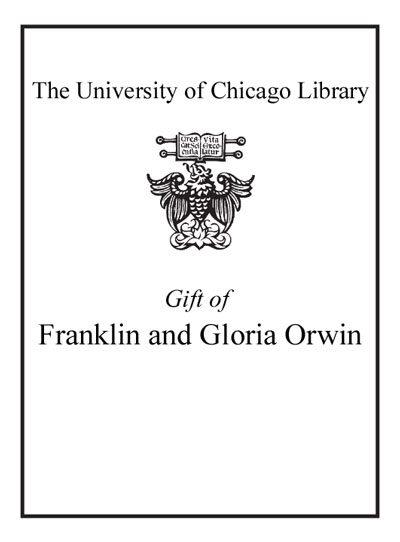PrefaceAngamanain is a very long island. The people are without a king, and are Idolaters, and are no better than wild beasts. And I assure you all the men of this Island of Angamanain have heads like dogs, and teeth and eyes likewise; in fact, in the face they are all just like big mastiff dogs! They have a quantity of spices; but they are a most cruel generation, and eat everybody that they can catch, if not of their own race.So said Marco Polo after coasting by the Andaman and Nicobar Islands in 1290. On his way home to Italy and immortality, he was dropping off a Chinese princess in distant India to wed a king shed never met. After his ship left Sumatra, sailing past a spattering of small green hills in the ocean, Marco Polo did not land. Had he done so, he might have learned more about the dog-people; but by then, hed learned something about self-preservation. To end up on the Andamans, one had to be singularly unlucky - to be swept off course by contrary winds, or wrecked by a monsoon storm. A long, delicate chain strung off the southern tip of Burma, and aligned north to south as though on a longitude, the islands had long sheltered a race of terrible reputation. "The people on this coast eat human flesh quite raw; their complexion is black, their hair frizzled, their countenance and eyes frightful, their feet are very large, and almost a cubit in length, and they go quite naked," related two Arabs in 850. "They have no sort of barks or other vessels; if they had, they would seize and devour all the passengers they could lay hands on." Stories abounded of the savages dismembering and roasting hapless sailors. "No one to this day has landed on the Andaman where people are cannibals," recorded the eleventh-century text Ajaibal-Hind. One wonders who lived to tell the tales. Southward the archipelago gave way to the Nicobars, where lived a far more peaceable people who offered coconuts to seafarers. Almost two millennia ago, the Ten-Degree Channel separating the Andamans from the Nicobars had become a popular route for ships laden with silk, grain, elephants, slaves, and other merchandise to cross from India to Sumatra and then on to China. Even so, many early scholars seem to have confused the two island groups. Ptolemy wrote of the Andamans as Bazakata, derived from the Sanskrit vivasakrata, meaning "stripped of clothes." The name Andaman conceivably came from nagnamanaba, Sanskrit for "naked man"; the name Nicobar derived from nakkavaram, Tamil for "naked." So both island clusters were called the Land of Naked People, a Chinese variant, Chuuan- wu, being no more helpfully translated as Testicle Display Country. The Andamanese intrigued all who sailed by, and not just by their nudity and alleged ferocity: with their small, dark bodies and frizzy hair they resembled Africans rather than Asians. "Some have supposed that a Portuguese ship, early in the 16th century, laden with slaves from Mozambique, had been cast on these Excerpted from The Land of Naked People: Encounters with Stone Age Islanders by Madhusree Mukerjee All rights reserved by the original copyright owners. Excerpts are provided for display purposes only and may not be reproduced, reprinted or distributed without the written permission of the publisher.

